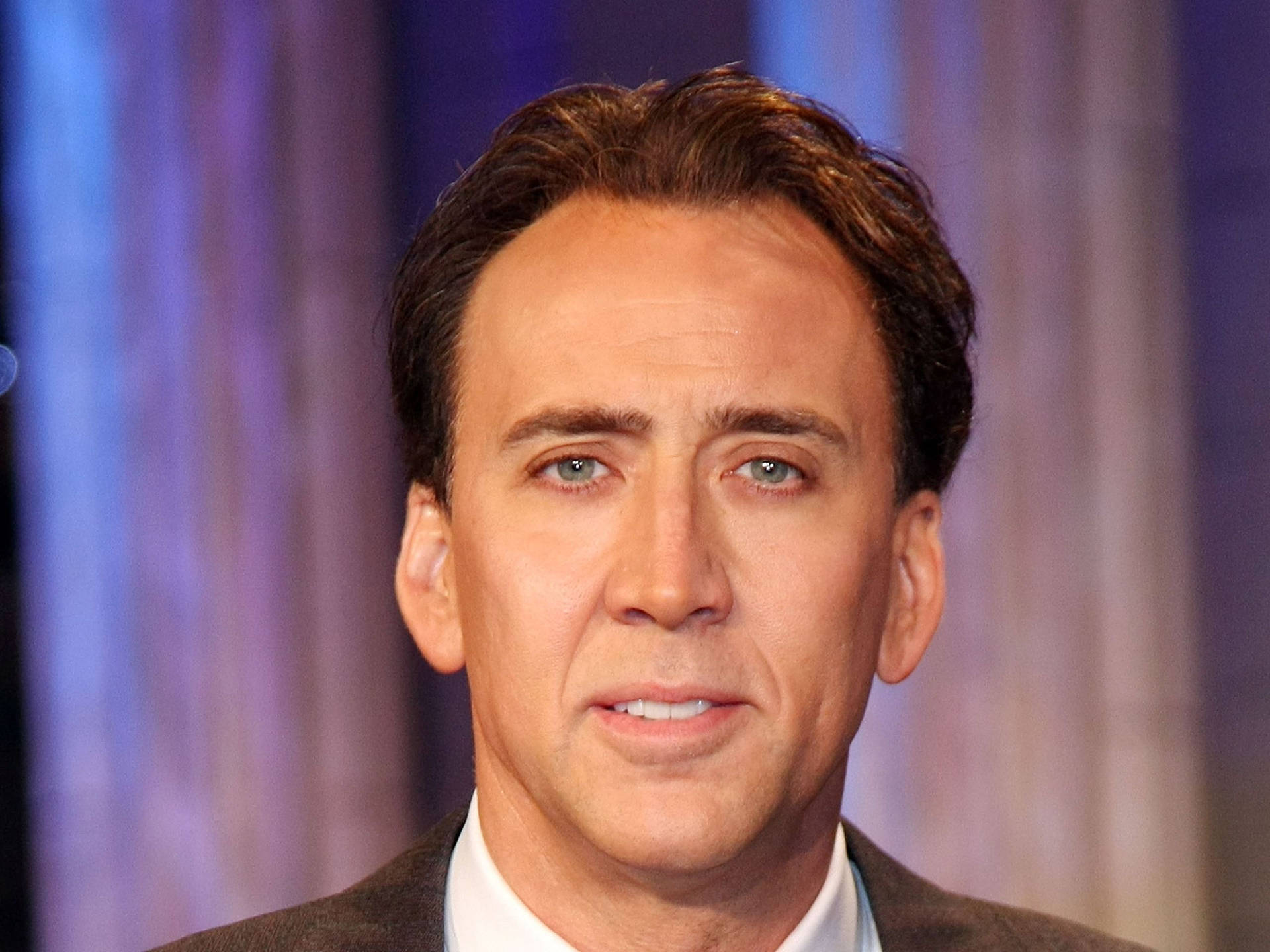
The shimmering illusion of Hollywood often paints a picture of endless opulence and impregnable wealth, where stars, with their lavish lifestyles and multiple properties, are assumed to be financially stable. Yet, behind the dazzling red carpets and blockbuster paychecks, a darker truth frequently emerges: the precarious reality of fortune quickly turning to destitution. The entertainment industry, with its dazzling highs and crushing lows, is replete with cautionary tales of those who, despite astronomical earnings, found themselves facing financial ruin.
Indeed, as the late Notorious BIG wisely observed, “mo money mo problems.” Unexpected medical bills, labyrinthine legal battles, or simply an ingrained addiction to a lifestyle that makes it impossible to retrench when times grow tough are some of the most significant factors propelling high-profile figures into financial distress. These stories serve as stark reminders that the glitz and glamour can swiftly conceal a harsher reality, where even the brightest stars can find their fortunes evaporating almost overnight.
It is crucial to understand that bankruptcy, while signaling severe financial difficulty, does not always equate to being “completely broke.” Often, it functions as a legal bulwark against total financial insolvency, designed to provide a measure of relief through a restructured debt repayment plan or the liquidation of specific assets to settle a portion of outstanding debts, as explained by Experian. This journey into the financial shadows of Hollywood reveals not just the moments of collapse, but also the often-complex paths these figures navigated in their desperate attempts to regain control.

1. **Michael Jackson: The King of Pop’s Staggering Debts**
The untimely death of Michael Jackson at the age of 50 in 2009 sent shockwaves across the globe, and alongside the profound grief, revelations of his profound financial struggles began to surface. Years prior, in 2004, his own financial advisers had already sounded the alarm, declaring him all but broke and incapable of repaying a $70 million loan from the Bank of America. This startling assessment came despite a career that had sold over 400 million records, an almost unimaginable feat of commercial success.
Despite his increasingly dire financial state, Jackson reportedly remained remarkably nonchalant about his extravagant lifestyle. Court documents later revealed that he continued to accrue monthly bills totaling $2 million, spent on an endless stream of new cars and other luxury items. This unwavering commitment to a life of unparalleled opulence only deepened the financial chasm that was forming beneath him.
By the time of his passing, the “Thriller” singer’s liabilities were truly staggering. Court documents unveiled that he owed more than $500 million to a multitude of creditors, a sum that underscored the sheer scale of his financial mismanagement. An accountant later testified that Jackson’s immense spending habits encompassed everything from jewelry and art to furniture and gifts, alongside frequent travel and substantial charitable donations, all compounded by annual interest payments of $30 million.

2. **Sharon Stone: A Stroke, a Fortune Lost, and a Resilient Comeback**
Sharon Stone, a reigning siren of the Eighties and Nineties, found her life and fortune irrevocably altered after suffering a severe stroke in 2002. Her subsequent years-long recovery proved to be a period of immense vulnerability, during which she recently disclosed that “people took advantage of me.” This devastating personal health crisis quickly spiraled into a financial catastrophe that left her utterly bereft.
Stone revealed to The Hollywood Reporter that her $18 million in savings, diligently accumulated over two decades of immense success, had vanished. “When I got back into my bank account, it was all gone. My refrigerator, my phone – everything was in other people’s names,” she recounted, concluding, “I had zero money.” This period saw her struggling to regain even basic functions, such as the ability to read, while those around her allegedly mismanaged her assets.
In the aftermath, the industry, which had once adored her, seemed to forget her. Stone reflected on “losing everything,” including her place at the pinnacle of the business. “I had to remortgage my house. I lost everything I had… It was like Miss Princess Diana and I were so famous – and she died and I had a stroke. And we were forgotten,” she recalled. Yet, rather than succumbing to “bitterness,” Stone proclaimed, “I live for joy now. I live for purpose.”
Despite the immense challenges, Stone mounted a remarkable career resurgence, eventually rebuilding her net worth to an estimated $40 million. Her journey highlights not only the fragility of wealth in the face of personal crisis but also the extraordinary resilience required to reclaim one’s life and financial stability. As she wisely put it last year, it is “very expensive to be famous,” citing the constant burden of covering lavish dinner checks for large entourages.

3. **Drake Bell: From Nickelodeon Stardom to Bankruptcy**
Drake Bell, once a household name as one of Nickelodeon’s biggest child stars, discovered that early fame offered no lasting immunity from financial tribulation. In 2014, the former *Drake & Josh* alum filed for bankruptcy, a stark public declaration of the severe debt he had accumulated. His legal documents revealed a staggering $581,000 in debt, a sum far exceeding his means.
Following his declaration of bankruptcy, Bell faced the painful loss of his $2 million Los Angeles home, which subsequently went into foreclosure. Legal filings obtained by *People* magazine painted a grim picture of his financial reality: he had listed the property for $1.575 million, yet his reported monthly income of $2,820 was dwarfed by his substantial monthly expenses totaling $18,771. The situation was further compounded by significant unpaid taxes.
This dramatic fall from grace underscores the perilous transition many child stars face as they navigate adulthood, often lacking the financial literacy and guidance needed to manage immense earnings. Bell’s story is a sobering reminder that even a celebrated career spanning a beloved children’s network can culminate in unforeseen and devastating financial collapse, leaving behind a trail of debt and lost assets.

4. **Mike Tyson: The Heavyweight Champion Who Punched Out His Fortune**
Mike Tyson, a name synonymous with power, wealth, and unparalleled boxing prowess, shockingly filed for bankruptcy in 2003, bringing to light years of underlying financial struggles. The heavyweight superstar, who had earned an astonishing $400 million over two decades in the ring, demonstrated a capacity for spending that was as formidable as his punching power.
Court documents laid bare the extent of his lavish lifestyle, revealing that Tyson spent an exorbitant $400,000 each month simply to maintain his accustomed existence. Between 1995 and 1997 alone, he incurred a staggering $9 million in legal fees, a testament to the complex and costly battles that often accompany such immense fame. In total, his bankruptcy filing cited $27 million in debt, a monumental sum for an athlete who had once commanded unimaginable sums.
In an affidavit, Tyson candidly admitted, “I have been in financial distress since 1998, when I was burdened with substantial debt to Showtime, taxing authorities, and parties to litigation.” He acknowledged that despite considerable fight income, asset sales, and litigation recoveries, he remained “unable to pay my bills.” Reflecting on his tumultuous journey at the SALT Conference in 2017, a more philosophical Tyson confessed, “I didn’t think I’d make it through my 30s,” a stark admission of the pressures and excesses that nearly consumed him.

5. **Aaron Carter: A Child Star’s Fortune Mismanaged**
Aaron Carter’s journey into financial ruin began almost as soon as his career took off. By the time he reached his eighteenth birthday, he had reportedly amassed a remarkable $200 million from his successful music career and numerous acting roles on television and Broadway. This immense early fortune, however, was tragically mismanaged by those entrusted with its care.
Carter later alleged that his parents had severely mismanaged his finances, ultimately leaving him with a mere $2 million in his bank account. Compounding this loss, he also found himself burdened with a substantial $4 million in unpaid taxes. The weight of these financial pressures led him to declare bankruptcy in 2013, seeking a clean slate from the overwhelming debt and responsibilities he had inherited.
His story is a poignant example of the vulnerabilities faced by young stars whose financial decisions are often in the hands of others. At the time of Carter’s tragic death in 2022 at the young age of 34, he had not established a will, a detail that meant all his remaining assets, reportedly a net worth of $400,000, would likely pass directly to his son, Prince. This final detail underscores the lasting impact of his early financial struggles and the lack of comprehensive planning.

6. **Cyndi Lauper: From Bankruptcy to “She’s So Unusual”**
Cyndi Lauper’s path to superstardom is one of Hollywood’s quintessential rags-to-riches narratives, yet it began with a significant financial setback. Before she captivated the world as a solo artist, the iconic “True Colors” hitmaker was a member of a band called Blue Angel. Despite their aspirations, their debut album failed to gain traction, a critical flop that would have immediate and severe financial consequences for Lauper.
In the wake of the album’s commercial failure, Lauper found herself facing bankruptcy, ultimately filing for it in 1981. This period of professional disappointment forced her to pivot dramatically, taking on various restaurant and retail jobs simply to sustain herself while she doggedly continued to pursue her musical ambitions. It was a time of grinding hardship, far removed from the glamour that would eventually define her career.
Her perseverance, however, paid off spectacularly. Lauper finally achieved widespread prosperity and acclaim with her seminal 1983 album, *She’s So Unusual*. This record launched her into the stratosphere of pop music, featuring enduring classics such as “Time After Time,” “Girls Just Want to Have Fun,” and “All Through the Night.” Her journey from financial ruin to global success is a powerful testament to her unwavering talent and resolve.

7. **Kim Basinger: A Legal Battle’s Costly Aftermath**
At the zenith of her career, *Batman* star Kim Basinger was undeniably one of Hollywood’s most sought-after leading ladies. However, in 1993, her career and financial stability were severely jeopardized when she abruptly withdrew from starring in the romantic thriller *Boxing Helena*. Her last-minute exit led to a highly publicized and financially devastating legal battle with Main Line Pictures, the film’s production company.
Main Line Pictures asserted that Basinger’s departure had cost them nearly $6.4 million in anticipated ticket sales. Consequently, they sued the actress for breach of contract, and a court astonishingly ordered her to pay the company $7.4 million to compensate for the predicted lost revenue. This immense financial judgment forced Basinger to file for bankruptcy, with her lawyer at the time describing the order as an “outrageous award” that she simply lacked the assets to satisfy.
The case became a protracted legal saga, dragging on for an arduous four years before Basinger and Main Line Pictures finally reached a settlement. While the precise terms of the settlement were not fully disclosed, it was for a reduced amount compared to the initial judgment. Despite the immense financial and reputational strain, Basinger staged a remarkable career comeback, notably with her role in 1997’s *L.A. Confidential*, which earned her an Academy Award and firmly reestablished her standing in Hollywood. Today, her net worth is estimated at around $20 million, but her bankruptcy remains one of the industry’s most infamous cautionary tales, demonstrating how a single professional decision can trigger a cascading financial disaster.

8. **Dionne Warwick: Battling a Decades-Old Tax Debt**
Legendary songstress Dionne Warwick, whose voice has graced countless hits like “Walk on By,” faced a quiet yet relentless financial struggle for decades before her bankruptcy filing in 2013 brought it into public view. Her declaration cited an overwhelming tax debt that astonishingly dated back to 1991, accumulating to more than $10 million over the years. This revelation shocked many, as it exposed the long-term impact of financial oversight on even the most established stars.
Her publicist, Kevin Sasaki, addressed the situation at the time, explaining that “Due to several consecutive years (the late ’80s through the mid-’90s) of negligent and gross financial mismanagement, Dionne Warwick has realized the current necessity to file personal bankruptcy.” This candid statement painted a picture of a star who, despite her enduring success, had been grappling with the aftermath of poor financial guidance for an extended period, leading to a debt spiral that eventually became unmanageable.
Court documents from her petition painted a curious financial portrait: Warwick claimed a monthly income of $20,950, almost entirely consumed by monthly expenses totaling $20,940. Sasaki clarified that while the initial tax principal had been repaid, the lingering burden comprised accrued interest and penalties, which continued to mount relentlessly. The case, a testament to her perseverance, finally saw dismissal in 2019, allowing the iconic singer a fresh start after years spent in the shadows of substantial debt.

9. **Francis Ford Coppola: The Director’s Triple Financial Gambit**
Francis Ford Coppola, a titan of cinema revered for masterpieces like *The Godfather*, presents a fascinating case study in artistic ambition clashing with financial reality. By 1992, an astonishing three bankruptcy filings in just nine years had marked his ledger, a stark testament to the precarious tightrope he walked between groundbreaking creativity and commercial viability. His spokesperson confirmed at the time that these significant financial woes stemmed primarily from the box office failure of his ambitious 1981 film, *One From the Heart*.
This particular project proved to be a critical and commercial disappointment, a gamble that cost Coppola dearly. The legal documents from his bankruptcy revealed staggering figures: liabilities amounting to $98 million against assets totaling $53 million, illustrating the profound financial chasm created by his cinematic pursuits. It became clear that even a visionary director, capable of commanding immense artistic respect, was not immune to the harsh financial realities of the entertainment industry, where a single misstep could lead to immense debt.
Remarkably, Coppola has largely managed to avoid further major financial catastrophe in the decades since, meticulously rebuilding his empire through astute business ventures and continued filmmaking. Yet, the echoes of his past gambles reverberated as recently as this year, when he undertook another monumental, self-funded epic, *Megalopolis*, staking a reported $120 million of his own fortune. Though he remains committed to his artistic vision, early reviews for this latest endeavor have been described as “lackluster,” reminding us that even for a seasoned veteran, the allure of the grand statement carries inherent financial risks.

10. **50 Cent: From ‘Get Rich or Die Tryin” to Strategic Bankruptcy**
Curtis Jackson, known globally as 50 Cent, burst onto the music scene with his debut album *Get Rich or Die Tryin’*, a title that, in hindsight, seems almost prescient given his subsequent financial journey. His meteoric rise brought him immense wealth, allowing him to acquire a million-dollar mansion that once belonged to none other than Mike Tyson, another celebrity whose financial tribulations are well-documented. With over 30 million records sold throughout his career, 50 Cent appeared to be the embodiment of enduring hip-hop success.
However, even a rapper whose moniker literally refers to currency was not immune to the precarious nature of immense wealth. A series of ill-advised investment decisions saw his financial challenges reach a critical juncture, culminating in his decision to file for bankruptcy in 2015. This move, for many, seemed contradictory to his image and immense earnings, yet it was a calculated maneuver aimed at averting total financial collapse rather than an admission of being completely broke.
50 Cent himself later offered a pragmatic explanation for his bankruptcy, highlighting it as a strategic business decision. “Businesspeople will do that in a heartbeat before losing money,” he elucidated in 2020. “Because it means they have the ability to be secure and invest again.” This insight reveals bankruptcy not just as an endpoint, but as a potential pivot—a legal mechanism to shed unmanageable debt and rebuild. Indeed, the rapper successfully navigated this process, emerging to rebuild his empire and, as of today, boasts an estimated net worth of $40 million, a testament to his astute recovery.
Read more about: Unleashing the Aquatic Titans: 14 ‘Boat Cadillacs’ that Ruled the Golden Age of Waterborne Luxury

11. **David Crosby: The Melancholy Tune of Financial Strain**
The late David Crosby, a foundational voice in rock music, experienced a complex financial trajectory marked by periods of both immense success and profound struggle. In his early years, as he attempted to forge a path as a solo artist, the road proved arduous, leading him to declare bankruptcy in 1985. It was only later, through his pivotal roles as a founding member of The Byrds and, most notably, the supergroup Crosby, Stills, Nash & Young, that he truly enjoyed a lucrative and celebrated career, cementing his place in music history.
Despite the eventual renown and earnings, Crosby, like many artists, found himself vulnerable to the economic shifts and unforeseen challenges of the modern era. In the final years of his life, financial troubles re-emerged with particular poignancy, exacerbated by the global pandemic. The inability to perform live, a critical revenue stream for many musicians, dealt a significant blow to his income, casting a shadow over his stability.
In a candid 2021 interview with *Guitar World*, Crosby laid bare his anxieties: “I’m trying to be grateful that I can still play live and pay the rent and take care of my family. But along comes Covid and I can’t play live. That was it. Now I’m broke. I don’t want to lose my home, man.” This poignant reflection captures the raw vulnerability even legendary figures can face when their primary means of livelihood is suddenly curtailed, underscoring the precariousness that often lurks beneath the surface of fame.

12. **Toni Braxton: Two Bankruptcies and the Un-Breakable Spirit**
Toni Braxton, the Grammy-winning R&B sensation renowned for her powerful vocals, faced an uphill financial battle from the very start of her career. Her initial recording contract left her with a paltry sum of just $1,972 after repaying the label for various costs—a stark reality that belied the glamorous image of a rising star. This scenario, unfortunately common in the music industry, trapped her in a cycle of debt, as she explained in 2015: “What happens is they give you advancement on the next record and then the next record. So you kind of stay in debt, in a sense.”
This structural financial burden eventually culminated in her first bankruptcy declaration in 1998, a legal attempt to untangle herself from the web of contractual obligations and accumulated debt. However, her struggles were far from over. A decade later, a cruel twist of fate in the form of severe health problems—including microvascular angina and a benign breast tumor—forced her to cancel a series of lucrative Las Vegas shows. This unforeseen medical crisis not only impacted her health but also further destabilized her already fragile financial footing.
Despite her best efforts to negotiate payment plans with creditors, the mounting debts became insurmountable. The foreclosure of her $2.6 million home in Duluth, Georgia, served as a final, painful catalyst. In 2010, Toni Braxton made the difficult decision to file for bankruptcy a second time, a testament to the persistent and complex financial challenges that can plague even the most successful artists, particularly when compounded by health crises and the intricate economics of the music business.

13. **Nicolas Cage: The Profligate Collector’s Perilous Path**
Nicolas Cage, an actor whose career has spanned acclaimed dramas and blockbuster franchises, amassed an astounding net worth of $150 million by the early 2000s, thanks to his roles in films like *Moonstruck*, *Leaving Las Vegas*, and the *National Treasure* series. His cinematic versatility brought him immense financial success, yet it also fueled a legendary appetite for acquisition that would ultimately push him to the precipice of bankruptcy. Cage’s “wild spending” became a saga unto itself, a dramatic narrative of luxury unconstrained.
The actor’s eccentric collection included an astonishing 30 different motorcycles, a fleet of vintage cars, and an impressive array of rare comic books, reflecting a penchant for the unique and valuable. However, his purchases often transcended mere collectibles, venturing into the truly extraordinary. He famously acquired two albino king cobra snakes as pets for $276,000, adding an $80,000 two-headed snake and a $150,000 pet octopus to his unconventional menagerie. These were not just expenditures; they were manifestations of an almost childlike wonder and an unyielding desire to possess the extraordinary.
Further cementing his reputation as a lavish spender, Cage purchased his own private island in the Bahamas in 2006 for a staggering $3 million, followed by the acquisition of a dinosaur skull in 2007 for $276,000. These exorbitant expenditures, coupled with a lack of financial oversight, eventually caught up with him. By 2009, the IRS revealed he owed a daunting $14 million in back taxes, a sum that brought his financial excesses into sharp, painful focus. Yet, in true Hollywood fashion, Cage embarked on a remarkable professional renaissance, accepting a relentless succession of film roles to “claw his way back,” transforming his artistic output into a means of financial redemption.
The dazzling, often perilous, journey of these Hollywood figures through financial triumph and ruin offers more than just cautionary tales; it provides a stark, unvarnished look into the intricate intersections of fame, fortune, and vulnerability. From the labyrinthine legal battles that can unravel a meticulously built empire, to the insidious creep of debt disguised as lavish spending, and the personal health crises that brutally expose financial fragility, each story is a chapter in the complex narrative of wealth in the public eye. While some, through sheer grit and strategic recalibration, have managed to rebuild their fortunes, others have wrestled with the echoes of insolvency until their final days. These dramatic sagas remind us that beneath the shimmering veneer of celebrity, the fundamental laws of finance, and the unpredictable nature of life, reign supreme, demanding both vigilance and resilience from even the brightest stars.


_(cropped)_(cropped).jpg)
